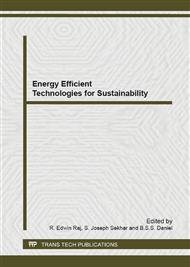p.199
p.206
p.213
p.218
p.226
p.231
p.238
p.245
p.250
Numerical Investigations of Spray Droplet Parameters in a Direct Injection Diesel Engine Using 3-Z Extended Coherent Flame Model
Abstract:
Diesel engine combustion modeling presents a challenging task as the injection starts with the spray formation and breakup of spray into droplets. The computation involved in predicting the in-cylinder fluid mixture during combustion using eulerian and lagrangian approach is rather a cumbersome task. In this work, 3D-CFD computations are performed to understand the behaviour of spray droplet variables on combustion process and emissions in a direct injection diesel engine. The study involves the computation of turbulent flow-field quantities, modelling various processes such as fuel spray distribution, atomization, collision, evaporation, combustion and pollutant formation using a commercial CFD code. Grid independence and time independent studies are carried out for finding the optimum grid size and time step. The numerical results predicted using CFD code is validated with the experimental data available from the literature. The process of combustion and emission characteristics is investigated numerically with respect to spray characteristics. The work is further extended to study the effect of swirl ratio and injection timing on droplet parameters.
Info:
Periodical:
Pages:
226-230
Citation:
Online since:
September 2013
Authors:
Price:
Сopyright:
© 2013 Trans Tech Publications Ltd. All Rights Reserved
Share:
Citation:


